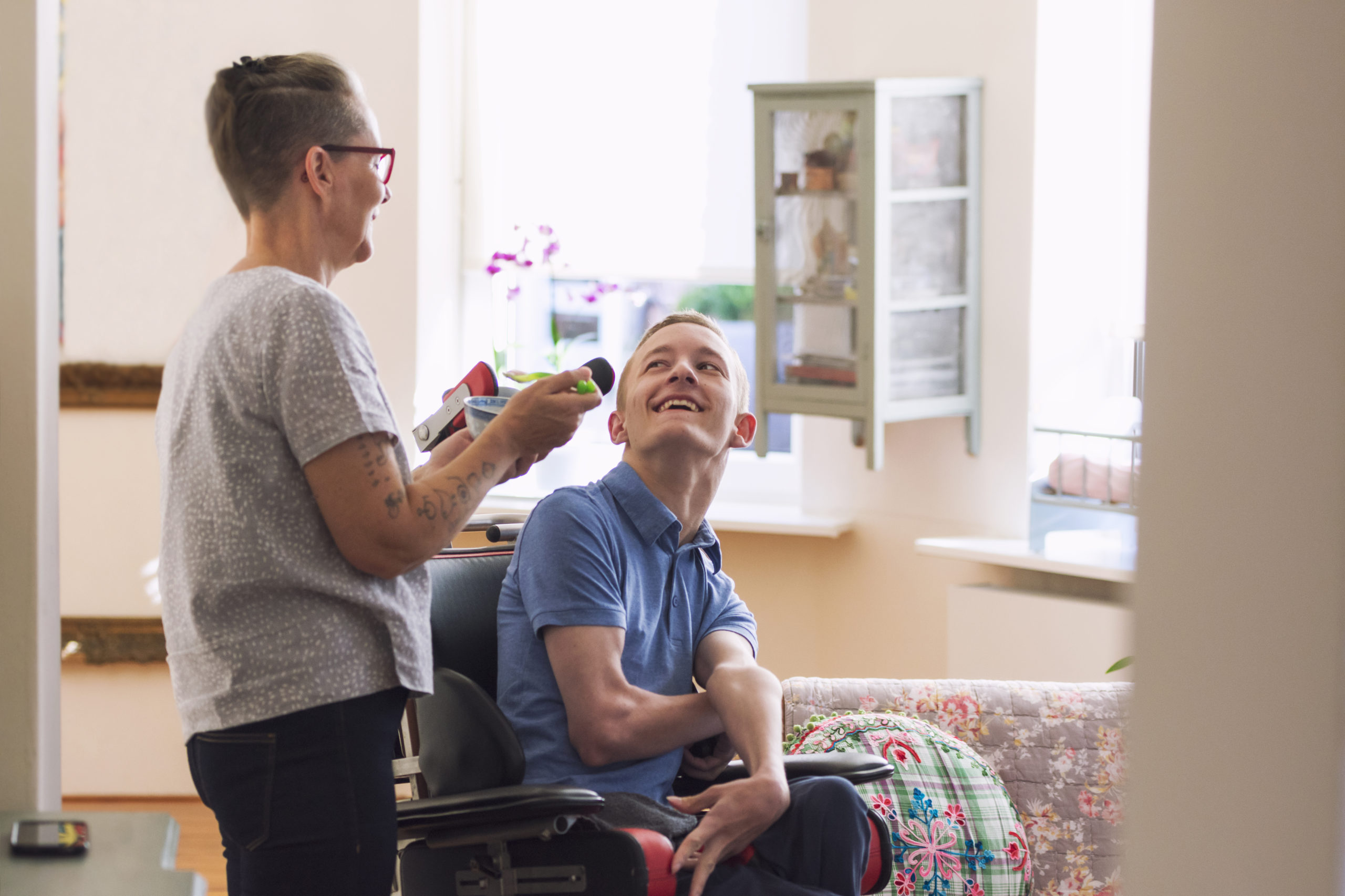Caregiving for a loved one is one of the most powerful ways to help someone with limited mobility or paralysis. It helps people live fuller, healthier, more connected, and independent lives.
While being a caregiver may not be something you chose, or ever thought you’d do, life sometimes has other plans. It can feel overwhelming at first, even scary, but with time, patience, and love you can provide healthy and safe caregiving to your loved one at home.
Caregiver Emotional Support
Family members provide most of the care for loved ones with a disability or chronic illness. More than
90 million Americans care for someone they love, and nearly
half of them do so from
home.
As important and valuable as being a caregiver is, it is not without emotional, physical, and financial challenges. It’s essential for caregivers to have a support system of their own where they can seek comfort, help, support, advice, and encouragement. Without additional support, caregivers can feel isolated and disconnected from their lives and become more prone to conditions like depression and anxiety.
There are several resources available for caregivers. Consult with local medical and/or counseling professionals for both individual and group resources.
Facingdisability.com and
spinalcord.com are two examples of websites that have lists of resources dedicated to caregivers.
Daily Activities as a Caregiver
Every caregiver should seek advice from qualified professionals about the right way to care for their loved one. Every person is unique and every injury is unique, so it’s not possible to outline specific programs to follow in the context of this article. We can, however, highlight a few of the activities caregivers typically perform each day.
Changing Position
As a general rule, it’s important that your loved one changes position frequently throughout the day, ideally every two hours. This helps avoid
potentially dangerous secondary conditions like bed sores, shearing and/or friction injuries,
blood clots, and pressure ulcers.
To avoid injury to their loved one or themselves, it’s essential that caregivers learn the safest way to move positions depending on their loved one’s particular injury.
Exercise
Regular exercise is a vital part of a loved one’s physical and emotional wellbeing. Simply because a person does not have the ability to move like they were once used to does NOT mean they don’t need a daily physical fitness regimen. Physical therapy, range of motion, and stretching exercises are all important.
Connection
Your loved one’s emotional health is just as important as their physical health. Help them stay connected and engaged with others. Socializing with friends and family, going on outings, engaging in hobbies, and participating in support communities are helpful. One of the most important ways caregivers help loved ones is to ensure they stay connected, engaged, and active.
Risk of depression is greater for people with paralysis, especially in the weeks and months immediately following injury. It’s important to be aware of the signs of depression and alert a medical professional to seek help.
Bowel Management and Your Loved One
Depending on the nature of the injury and level of paralysis, a caregiver may need to provide support to help keep their loved one’s bowels moving.
Bladder and
bowel care are two important ways caregivers assist paralyzed loved ones. An effective bowel care program is essential to avoid uncomfortable and potentially dangerous conditions such as constipation, fecal impaction, diarrhea, and more.
Caregivers help assist their loved ones with lifestyle and wellness habits that promote regular bowel movements. Ample hydration, fitness, a balanced diet with plenty of fiber, and keeping a bowel chart are some examples of ways caregivers can be helpful.
The use of laxatives can be an important part of helping a loved one maintain a regular, healthy bowel program. Not all laxatives are the same, however, and some can have unpleasant or even painful side effects. Stool softening laxatives that contain docusate sodium are considered safe and with minimal side effects. Always consult with a physician before incorporating a medication - even over the counter medications - into your routine.
Enemeez® is Fast-Acting & Gentle
Enemeez® is a unique stool softener laxative. While oral products take 12 to 72 hours for relief, our mini-enema works within 15 minutes! Your comfort is important to us, which is why developed
Enemeez® and
Enemeez® Plus to act quickly and be as gentle as possible. Our formula produces fast, predictable results, typically in 2–15 minutes, with no after-burn.
Enemeez® has been a preferred and trusted formula assisting people to improve their bowel care needs for more than 15 years. The convenient twist-off tip makes Enemeez® easy to administer for safe and effective bowel care needs.
You can request a free sample, or purchase
Enemeez® and Enemeez® Plus easily on
our website. Follow
our blog here to stay updated on healthy habits, constipation prevention and more.
Disclaimer: The material contained is for reference purposes only. Alliance Labs, LLC and Summit Pharmaceuticals do not assume responsibility for patient care. Consult a physician prior to use. Copyright 2021 Summit Pharmaceuticals and Alliance Labs, LLC.
Sources:
https://www.christopherreeve.org/living-with-paralysis/for-caregivers/caregivers
https://caregiver.com/articles/caring_for_the_paralyzed/ 












